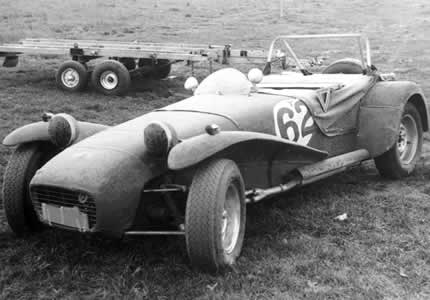Auto-Future: Adding Lightness
One of the main improvements in future cars and associated global platforms: weight reduction. Thanks to new, stricter emissions and fuel consumption regulations, this trend is well underway. New cars have already stopped gaining weight. And manufacturers are redoubling their vehicular dieting efforts. Their progress has been predictably rapid. for example, future generations of the European compact class (e.g. Focus III, Golf VII) should shed We more than 100kg, using several strategies…
The increased use of high strength steels allows the use of thinner sheet-metal, although this poses other issues in stiffness, vibration modes and welding processes. The key factor: one can not just replace steel grades. Carmakers must deploy a holistic approach involving changes in manufacturing process. Expect more hydroformed parts and hot stamping of ultra high strength steel grades.
Another, more expensive trend in the body structure: increased use of aluminium and steel in panels and other parts. BMW is committed to this strategy; it already does so in the current 5-series. You can expect an increasingly advanced mix of materials within two car generations. A recent joint-research project of several European manufacturers previews an aggressive mix of different materials (see figure below), although this still poses many challenges in cost and manufacturing robustness.
Of that 100kg expected to fall by the wayside, about a 30kg reduction will come from the body structure. The rest wil be shed from, well, everything else. Car manufacturers are telling their suppliers that new parts must be both cheaper and lighter than the old ones. Careful design and the cost-leverage of global platforms should help git ‘er done, as witnessed by the new Ford Fiesta.
Weight reduction can create a virtuous cycle of further weight reduction. For example, if the overall structure and components are lighter, reduced stress enables a lighter suspension. Light weight opens the possibility of engine downsizing while maintaining performance, or better yet, increasing engine performance with turbocharging…
More by David Moreira
Latest Car Reviews
Read moreLatest Product Reviews
Read moreRecent Comments
- SCE to AUX 08 Rabbit (college car, 128k miles): Everything is expensive and difficult to repair. Bought it several years ago as a favor to a friend leaving the country. I outsourced the clutch ($1200), but I did all other work. Ignition switch, all calipers, pads, rotors, A/C compressor, blower fan, cooling fan, plugs and coils, belts and tensioners, 3 flat tires (nails), and on and on.19 Ioniq EV (66k miles): 12V battery, wipers, 1 set of tires, cabin air filter, new pads and rotors at 15k miles since the factory ones wore funny, 1 qt of reduction gear oil. Insurance is cheap. It costs me nearly nothing to drive it.22 Santa Fe (22k miles): Nothing yet, except oil changes. I dread having to buy tires.
- AZFelix 2015 Sonata Limited72k when purchased, 176k miles currentlyI perform all maintenance and repairs except for alignment, tire mounting, tire patching, and glass work (tint and passenger left due to rock hit). Most parts purchased through rockauto.com.Maintenance and repairs during three years of ownership:Front rotors and all brake pads upgraded shortly after purchase.Preparing for 17th oil change (full synthetic plus filter c.$50), one PCV valve.Timing & accessory belts, belt tensioner.Coolant full flush and change.Fibrous plastic material engine under tray replaced by aftermarket solid plastic piece $110.One set of tires (c.$500 +installation) plus two replacements and a number of patches due to nails, etc. Second set coming soon.Hood struts $30.Front struts, rear shocks, plus sway bar links, front ball joints, tie rod ends, right CV axle (large rock on freeway damaged it and I took the opportunity to redo the rest of items on this list).Battery c.$260.Two sets of spark plugs @ $50/set.Three sets of cabin and engine filters.Valve cover gasket (next week).Averages out to c.$1400 per year for the past three years. Minor driver seat bolster wear, front rock chips, and assorted dents & dings but otherwise looks and drives very well.
- 3-On-The-Tree 2014 Ford F150 Ecoboost 3.5L. By 80,000mi I had to have the rear main oil seal replaced twice. Driver side turbo leaking had to have all hoses replaced. Passenger side turbo had to be completely replaced. Engine timing chain front cover leak had to be replaced. Transmission front pump leak had to be removed and replaced. Ford renewed my faith in Extended warranty’s because luckily I had one and used it to the fullest. Sold that truck on caravan and got me a 2021 Tundra Crewmax 4x4. Not a fan of turbos and I will never own a Ford again much less cars with turbos to include newer Toyotas. And I’m a Toyota guy.
- Duke Woolworth Weight 4800# as I recall.
- Kwik_Shift_Pro4X '19 Nissan Frontier @78000 miles has been oil changes ( eng/ diffs/ tranny/ transfer). Still on original brakes and second set of tires.


































Comments
Join the conversation
About that BMW 5-series front end: the tradeoff is that's it's a costly PITA to repair.
Amen! One often overlooked source of weight in modern vehicles is sound deadening. Maybe we can learn to live with a little more NVH?